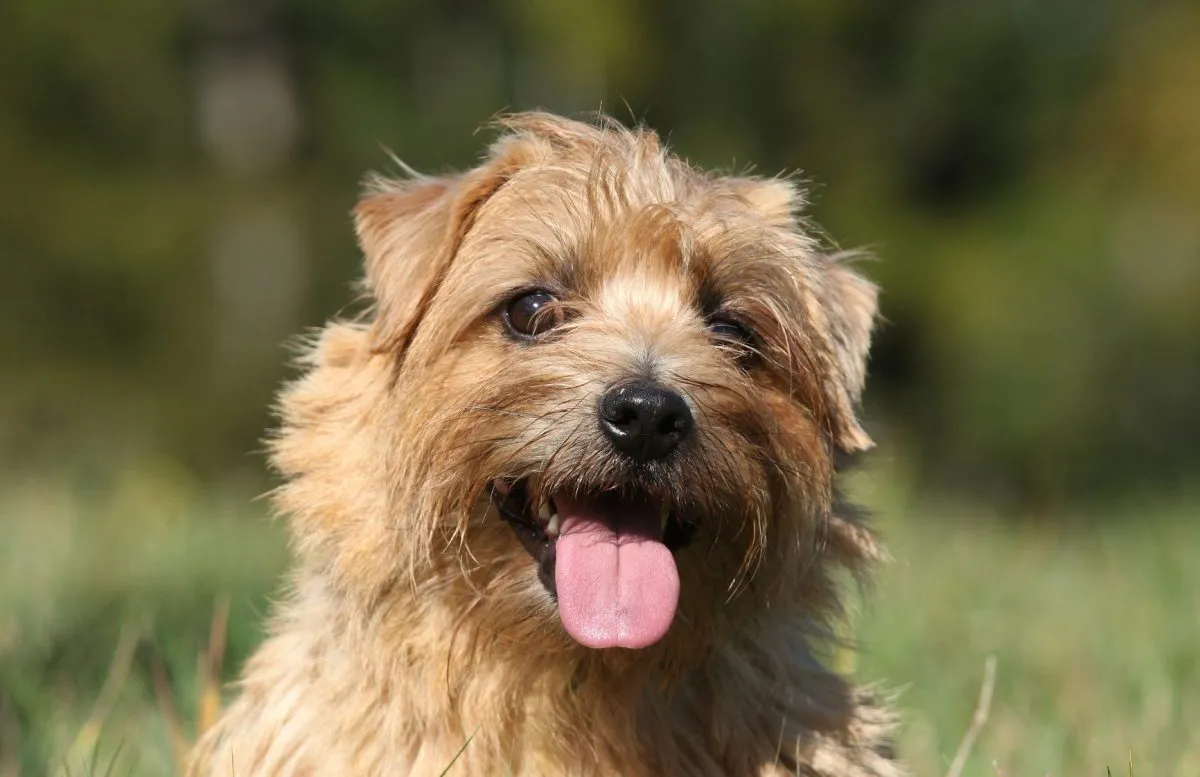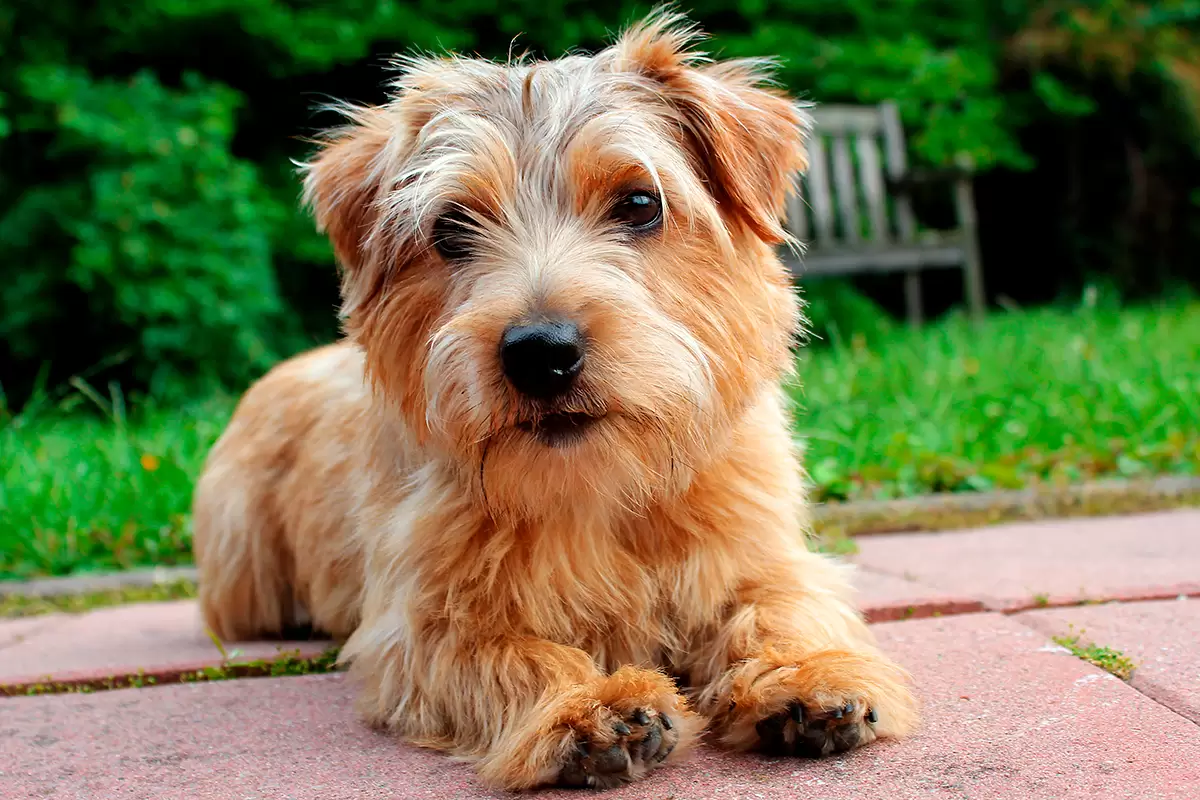
The Norfolk Terrier shares much of its early history with its close relative, the Norwich Terrier. Both breeds originated in East Anglia, England, in the late 19th and early 20th centuries. They were bred to hunt vermin on farms and accompany foxhounds during hunts. Their small size and fearless nature made them ideal for chasing rats and going to ground after foxes.
Originally, Norfolk and Norwich Terriers were considered the same breed, distinguished only by their ear carriage—Norwich Terriers have erect ears, while Norfolk Terriers have drop ears. The breeds were officially separated in the 1960s by the Kennel Club (UK) and American Kennel Club, recognizing them as distinct types.
The Norfolk Terrier is admired for its outgoing personality, compact size, and scruffy charm. It is especially popular among city dwellers and families who want a spirited but manageable companion. While less common than some other terrier breeds, the Norfolk maintains a devoted following and continues to shine in dog shows, earthdog trials, and as a loyal household companion.
This breed may be small in size, but it carries itself with the attitude and substance of a much larger dog.
Coat:
Hard, wiry, and straight outer coat with a dense undercoat. Requires hand-stripping to maintain texture.
Color:
• Red
• Wheaten
• Black and tan
• Grizzle
Size:
• Height: 9–10 inches (23–25 cm)
• Weight: 11–12 lbs (5–5.5 kg)
Build:
Sturdy, short-legged, and well-balanced. Slightly longer than tall, with a strong neck and level topline.
Head & Expression:
Broad skull with expressive, oval-shaped dark eyes. Drop ears hang close to the cheeks, giving a soft, alert look.
Tail:
Carried level with the back or slightly upward. Traditionally docked in some countries.
This breed is a confident, social, and spunky little dog—classic terrier through and through, with an affectionate side that makes it a great family pet.
Bold and Curious:
Loves to explore and investigate—always ready for a new adventure.
Friendly and Social:
More amiable than some terriers, the Norfolk generally gets along well with other dogs and people.
Energetic but Manageable:
Requires regular exercise and mental stimulation, but doesn’t need hours of running.
Alert and Vocal:
Naturally suspicious of strangers and will bark to alert—makes a good little watchdog.
Affectionate:
Forms close bonds with its family and enjoys cuddles when not busy investigating something.

• Terrier Personality, Compact Package:
You get all the liveliness and courage of a terrier in a size that’s easy to manage.
• Great for Apartments or Small Homes:
As long as exercise needs are met, they thrive in smaller living spaces.
• Friendly with Family:
More tolerant and affectionate than many terriers—good with children and other dogs if socialized early.
• Low Shedding:
Though they require grooming, they shed minimally when properly maintained.
• Travel-Sized:
Easy to take along on trips, walks, or even tucked in a bag—always ready to go.
Training:
Smart and trainable but may have a stubborn streak. Keep sessions short, fun, and consistent.
Exercise:
Needs daily walks and active playtime. Puzzle toys and digging areas help satisfy their instincts.
Grooming:
Requires hand-stripping or regular trimming to maintain coat texture. Weekly brushing helps remove debris.
Diet:
A high-quality small breed diet suited to their energy level. Watch for weight gain, especially in less active dogs.
Socialization:
Introduce early to other dogs, people, and environments to prevent reactivity or excessive barking.

The Norfolk Terrier is a relatively healthy breed with a good lifespan and few major breed-specific concerns.
Lifespan: 12–15 years
Common Health Issues:
• Hip dysplasia
• Luxating patella
• Mitral valve disease (heart)
• Lens luxation (eye condition)
• Obesity – small dogs can easily become overweight without portion control
Work with a breeder who tests for hereditary issues and provides healthy early development.
Compared to the Norwich Terrier:
Very similar in temperament and build, but with distinct ears—Norfolks have dropped ears, while Norwich Terriers have pricked ones. Norfolks are sometimes described as slightly more relaxed.
Compared to the Cairn Terrier:
Cairns are larger, with a coarser coat and more independent nature. Norfolks are often cuddlier and more people-focused.
Choose this breed if you:
• Want a brave, compact terrier with a soft side
• Live in a smaller space but want an active dog
• Enjoy grooming and interactive play
• Prefer a terrier that's more sociable than scrappy
• Are looking for a lifelong companion with a bright personality
Not Ideal For:
• People looking for a quiet or sedentary dog
• Owners who can’t commit to training and consistent mental stimulation
• Homes with very small pets (they may chase)
United Pet Club is here to help with breeder connections, grooming guidance, and terrier-specific training advice. Whether you’re a first-time dog owner or a lifelong terrier lover, the Norfolk is a plucky, loving breed ready to brighten your life.